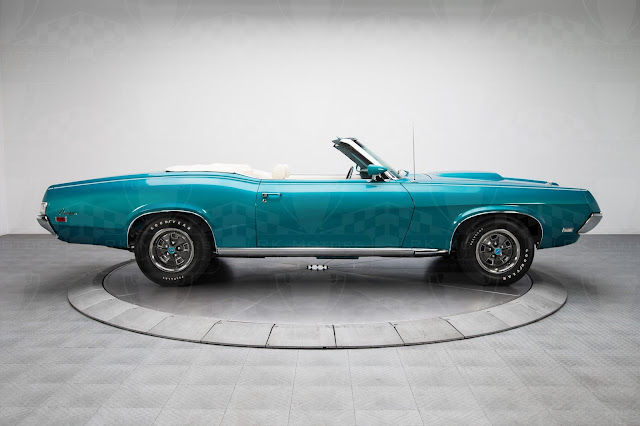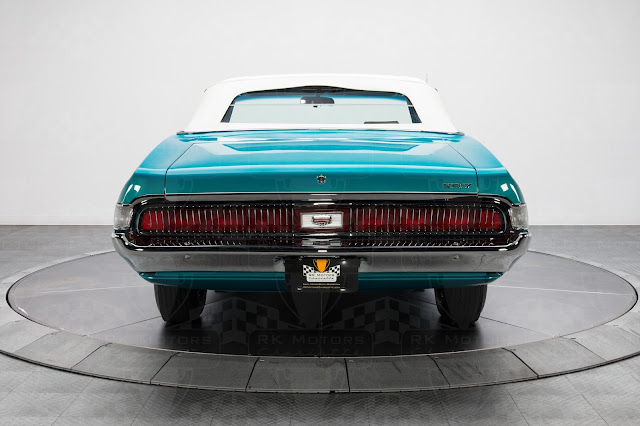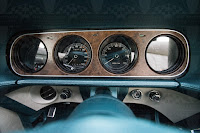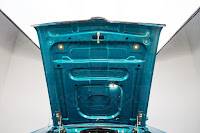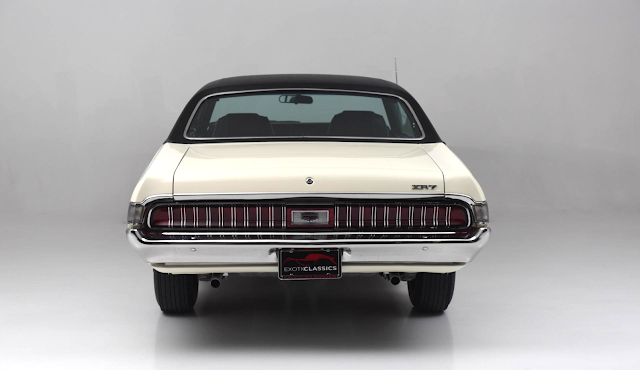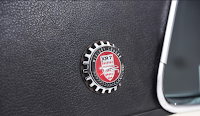The Mercury Cougar is a nameplate applied to a diverse series of automobiles sold by Mercury from 1967 to 1997, and again from 1999 to 2002. While most examples were produced as two-door coupes, at various times throughout its production life, the Cougar was also sold as a convertible, four-door sedan, station wagon, and hatchback.
The Cougar shared much of its underpinnings with the Ford Mustang. The introduction of the Cougar finally gave Mercury its own "pony car". Slotted between the Ford Mustang and the Ford Thunderbird, the Cougar was the performance icon and eventually the icon for the Mercury name for several decades.
This was the only generation with covered headlights. The Cougar was Motor Trend magazine's car of the year for 1967. (wikipedia)
1967–1968
The 1967 Cougar went on sale September 30, 1966. It was based on the 1967 refaced first-generation Mustang, but with a 3-in-longer (76 mm) wheelbase and new sheet metal. A full-width divided grille with hidden headlamps and vertical bars defined the front fascia—it was sometimes called the electric shaver grille. At the rear, a similar treatment had the license plate surrounded on both sides with vertically slatted grille work concealing tail lights (with sequential turn signals), a styling touch taken from the Thunderbird.
The Cougar was available in two models (base and luxurious XR-7) and only came in one body style (a two-door hardtop, no center or B-pillar). The XR-7 model brought a simulated wood-grained dashboard with a full set of black-faced competition instruments and toggle switches, an overhead console, a T-type center automatic transmission shifter (if equipped with the optional Merc-O-Matic transmission), and leather-vinyl upholstery.
Comfort and performance options available for the Cougar included the "Tilt-Away" steering wheel that swung up and out of the way when the driver's door was opened, the transmission in "park", and the ignition was off.
Engine choices ranged from the 200 hp 4.7 L two-barrel V8 to the 210 hp 4.9 L two-barrel V8 and the 335 hp 6.4 L four-barrel V8. A performance package called the GT was available on both the base and XR-7 Cougars. This included the 6.4 L V8, as well as a performance handling package and other performance enhancements.
1969
From 1969, a convertible model was available in either standard or XR-7 trim. The grille switched from vertical bars to horizontal bars. Tail lights still spanned the entire rear of the car and retained vertical chrome dividers, but were now concave rather than convex. Body sides now featured a prominent line that swept downward from the nose to just ahead of the rear wheel wells.
The new standard Cougar engine was a 250-horsepower 351 Windsor. A 290 hp (216 kW) 351 Windsor V8 was also added to the engine lineup. The 302 cu in. engines were dropped, except for the "Boss" version, available only with the Eliminator package (see photos below).
A 1969 Mercury Cougar XR7 was featured in the James Bond movie
On Her Majesty's Secret Service (1969)
1970
For 1970, a new front end featured a pronounced center hood extension and electric shaver grille similar to the 1967 and 1968 Cougars. Federally mandated locking steering columns appeared inside, and high-backed bucket seats, similar to those included in the 1969 Eliminator package, became standard on all Cougars. Other changes included revised tail light bezels, new front bumper and front fender extensions, and larger, recessed side markers. The 300 hp (224 kW) 351 "Cleveland" V8 was now available for the first time.
A 1970 Mercury Cougar Eliminator
The 1970 Eliminator received with new striping, revised colors, and the four-barrel 351 Cleveland replacing the four-barrel 351 Windsor as the standard engine.
A 1970 Mercury Cougar Eliminator Boss 302
(Photos from automobilemag.com, rkmotorscharlotte.com, imcdb.org,
mercurycougar.net, favcars.com, exoticclassics.com)
mercurycougar.net, favcars.com, exoticclassics.com)














































































